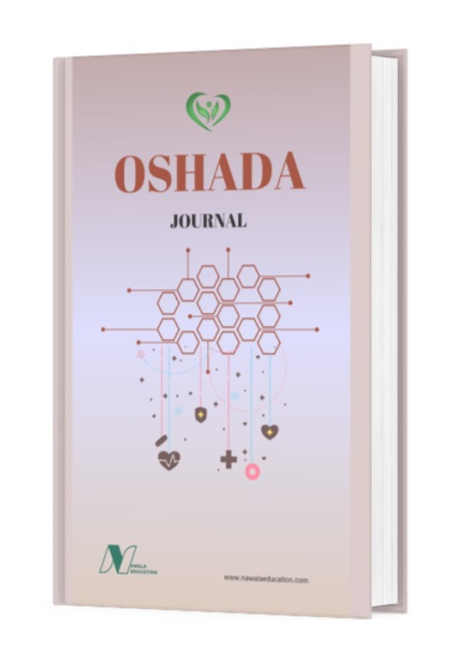The Role of Community Health Nurses in Overcoming Dengue Hemorrhagic Fever Outbreaks in Densely Populationd Housing
DOI:
https://doi.org/10.62872/tgwea384Keywords:
Aedes Aegypti, Dengue Hemorrhagic Fever, Community Health NurseAbstract
Densely populated housing often faces challenges in managing a healthy environment, which exacerbates the spread of Aedes Aegypti. Efforts to prevent Dengue Hemorrhagic Fever (DHF) can be carried out collaboratively between the community and nurses to suppress the spread of the disease. This research aims to explore the role of community nurses in dealing with dengue hemorrhagic fever outbreaks in densely populated housing areas. The research approach used in this research is a qualitative systematic literature review approach. The research results show that community nurses play an important role in empowering the community through the Larva Monitoring Officer (Jumantik) program to monitor and prevent dengue fever. Collaboration between the government, health workers and the community is very important to reduce the incidence of dengue fever significantly.
Downloads
References
Apriyani, Ummiyati, S. R, Sutomo, AH 2017. Environmental sanitation and the presence of Aedes Sp mosquito larvae with the incidence of dengue fever in Banguntapan Bantul. Journal of Community Medical News, 33(2).
Ariyani, Y., Saputra, AU, & Dewi, P. (2023). Health Education about Dengue Fever Prevention at Sako Palembang Community Health Center in 2022. Nanggroe: Journal of Cendikia Service, 2(5).
Aunul, S., Riswandi, R., & Handayani, F. (2021). Gender-Based Participatory Communication among Female Larvae Monitoring Volunteers. Journal of Communication Research, 4(1), 98-112.
Chairil, and Dames, A., 2017. Overview of Community Environmental Sanitation on DHF Incidents in Rw 11, East Sidomulyo Village, Marpoyan Damai District, Pekanbaru. Photon: Journal of Science and Health, 7(02), pp.125-129.
Chandra, E., & Hamid, E. (2019). The influence of climate factors, population density and larvae-free rate (ABJ) on the incidence of dengue hemorrhagic fever (DBD) in Jambi City. Journal of Sustainable Development, 2(1), 1-15.
Dinata, A., & Dhewantara, PW (2012). Characteristics of the physical, biological and social environment in the dengue endemic area of Banjar City in 2011. Journal of Health Ecology, 11(4), 315-326
Directorate General of P2P. (March 21, 2024). DHF cases are high, be aware of the complications. Ministry of Health. accessed on June 27, 2024https://p2p.kemkes.go.id/kas-dbd-sedang-tinggi-waspada-komleksi-nya/
Hadinegoro, SRH, and Satari, HI (2004). Dengue Hemorrhagic Fever. Jakarta: Publishing House, Faculty of Medicine, University of Indonesia..
Hidayat, AN (2009). Level of Knowledge, Attitudes and Practices of Families Regarding Dengue Dengue Prevention in Rw 09, Kramatpela Village, Kebayoran Baru District, South Jakarta, 2009. SKRIPSI. Jakarta: FKIK UIN Syarif Hidayatullah.
Ministry of Health. (2012). Disease data in 2011 decreased compared to 2010. Director General of Disease Control and Environmental Health. Jakarta.
Ministry of the Republic of Indonesia. (2017). Guidelines for the Prevention and Control of Dengue Hemorrhagic Fever in Indonesia. Jakarta: Directorate General of Disease Control and Environmental Health, Indonesian Ministry of Health.
Kusuma, AP, & Sukendra, DM (2016). Spatial analysis of the incidence of dengue hemorrhagic fever based on population density. Unnes Journal of Public Health, 5(1), 48-56.
Kusumawati, N., & Sukendra, DM (2020). Spatiotemporal Dengue Hemorrhagic Fever based on House Index, Population Density and House Density. HIGEIA (Journal of Public Health Research and Development), 4(2), 168-177.
Marlena, M., Rinidar, R., Rusdi, M., Farida, F., Ferasyi, TR, & Nurliana, N. (2020). The Relationship between Settlement Density and Settlement Area on the Distribution of Dengue Hemorrhagic Fever. Journal of Veterinary Science, 38(2), 112-120.
Mubarak, M., & Kusnan, A. (2022). Education on Dengue Hemorrhagic Fever Prevention at SDN 76 Abeli, Kendari City. Empowered Indonesia, 3(4), 1157-1166.
Prasetyo. (2014). Prevention and Management of Dengue Hemorrhagic Fever and Hemorrhagic Fever. Jakarta: Directorate General of PPM and PL of the Indonesian Ministry of Health.
Sari, RS, Rianti, R., Napsiah, S., Setyawati, Y., Sarimanah, U., Lestari, R., & Nasution, AK (2024). Health Education about the Prevention and Management of Dengue Fever in an Effort to Increase Parental Knowledge. JMM (Independent Community Journal), 8(3), 2863-2871.
Silalahi, N., Ginting, SB, Malau, PP, Tinambunan, TR, Tampubolon, E., & Purba, BD (2024). Health Education on the Causes of Dengue Hemorrhagic Fever in Jati Kesuma Village, Namorambe District, Deli Serdang Regency. Putri Hijau Community Service Journal, 4(2), 69-72.
Susilowati, IT, & Widhiyastuti, E. (2019). Empowering the community in preventing dengue hemorrhagic fever by providing education on clean and healthy living behavior and the use of herbal ingredients. JPPM (Journal of Community Service and Empowerment), 3(2), 237-243.
Wesolowski A, Qureshi T, Boni MF, Sundsøy PR, Johansson MA, Rasheed SB, et al. (2015). Impact of Human Mobility on the Emergence of Dengue Epidemics in Pakistan. Proc Natl Acad Sci U S A. 112(38):11887– 92
World Health Organization. (1959). Community Nursing Services.
Wowor, R. (2017). The influence of environmental health on changes in the epidemiology of dengue fever in Indonesia. e-CliniC, 5(2).
Zulkarnaini, Siregar YI, Dameria. 2009. The relationship between household environmental sanitation conditions and the presence of Dengue vector larvae in areas prone to dengue hemorrhagic fever, Dumai City in 2008. Journal of Environmental Science 2:115–124
Downloads
Published
Issue
Section
License
Copyright (c) 2024 Jasmin Ambas, Dwi Siyamsih, Desi Ratna Sari, Rosmaria Rosmaria, Seffiani Dwi Azmi (Author)

This work is licensed under a Creative Commons Attribution-ShareAlike 4.0 International License.

This work is licensed under a Creative Commons Attribution-ShareAlike 4.0 International License.











